Note: This post may be too long for those reading in email. To access the entire article, click on the headline above.
6 OCTOBER—In the days following the destruction of the Bedouin community of Deir Alla—previously reported here—I wondered and worried about the displaced families. Seventeen in all. Where were they living? How, especially, were the children coping in the aftermath of a hurried evacuation after months of settler attacks?
I reached out to my friend Adnan Al–Abayyat to ask. Adnan’s texts and visual documentation were the basis of my report on the ethnic cleansing of Deir Alla. His parents and other family members lived there.
All of the families—along with their goats and sheep—had relocated to the nearby village of Kisan where they were taken in by relatives. Multiple generations and family members—brothers and their wives, children, cousins, grandparents—were living in homes meant for many fewer inhabitants. People and animals whose days and lives had been defined in part by wandering and grazing upon the land had been forced into village life, shoehorned into cramped and unsuitable living conditions. Adnan’s house in Kisan was packed to overflowing with family from Deir Alla.
People were worried, fearful, and grieving.
And the children? I texted with Adnan’s wife, who works at the Kisan school library, to ask how they were doing. I also asked if the children had done any drawings that depicted their recent experience. This was her reply:
The children in Deir Alla and Kisan have been deeply affected by the ongoing settler violence and displacement. Many of them express feelings of fear, confusion, and sadness, especially when witnessing attacks or seeing their families under threat. In some cases, the disruption of daily life—such as the inability to play safely or move freely between villages—has caused them emotional and psychological stress.
We have some drawings made by children that reflect their experiences—some have drawn demolished homes, military vehicles, or crying figures, while others expressed hope by drawing olive trees and doves. I’d be happy to share a selection of these with you.
Sabah sent the following three pictures. These, also, are important “Palestinian voices.” They tell a Palestinian story, conveyed through the drawings of children, about a way of life that’s being destroyed. They convey fear, sadness, loss, violence, and also happiness and hope. The power of these drawings is retained and conveyed despite, as I must note, the poor lighting in some of the photographs.
In the drawing above, a yellow backhoe is in the process of demolishing a home. This is the machinery typically used to destroy houses in the West Bank. They show up frequently in children’s drawings. Settlers are carrying assault weapons and killing animals. On the left, more settlers hold Molotov cocktails. These were thrown into a home one night as the family slept. This terrifying incident is depicted with flames of yellow and red.
This drawing also features a yellow backhoe and demolished home. Blood flows from animals killed by settlers. The Arabic says, “The houses were burned and people were sad. They cried because they were powerless.”
A happier scene is depicted in the drawing above. The animals, which appear to be sheep, are alive and healthy, and one animal in the lower left corner has a smile. The Arabic says, “They used to live in peace and they were happy.”
After seeing these I texted Sabah and proposed to publish the drawings, if I could get more of them. They seemed a powerful way to share the experiences and voices of Palestinian children. Sabah liked the idea. She soon organized an afternoon of drawing at the school’s library. This brought the children of Deir Alla together.
Afterward she sent the following photos along with a short text,
The children are doing better. Drawing really helps them express their feelings and share what’s on their minds. It gives them a safe space to talk and connect.
What follows are nine additional drawings and two photographs of the children at work. While they clearly function as graphic stories, they can also be approached and appreciated as any work of art might be—aesthetically, intuitively, emotionally. Indeed, it may be on that level that they are most profound. Some of the drawings depict happy memories while others focus on the destruction of the community.
In presenting this work I offer minimal commentary and only for clarification.
A taboon, a traditional outdoor oven, is depicted in the drawing below. It can be seen in the upper right quadrant—a dark circular form enclosed on three sides. Below it a dog is tethered to a leash. The community taboon appears in several of the drawings.
The houses and animal sheds of Deir Alla were made of concrete block with lightweight metal roofing. Tires were placed on the roofs to hold them down in high winds. These tires, represented by circles, can be seen in the drawing above and in others as well.
In this final drawing, a large backhoe is in the process of demolishing a home from which the Palestinian flag flies. An Arab family is gathered below the home. On the right side of the drawing, above an Israeli flag, an olive tree has been cut down and a sheep has been killed.
These drawings are expressions of emotional and psychological scarring. Even the happier pictures can be read as a longing for a lost or imagined world—a world of safety and peace that these children have never known. These works should stand in the future as valued historical records, depictions of West Bank reality under brutal military occupation and ongoing ethnic cleansing.
And also, as expressions of resistance and evidence of the resilience of children and of the human spirit.
Independent journalism requires investment to sustain itself. If you appreciate what you read, please consider supporting this work. You can become a paid subscriber by clicking on the button below. You can “buy me a cup of coffee.” You can send a one-time, monthly, or yearly donation via PayPal. Or you can support me on Patreon. You can also share this article. Thank you.


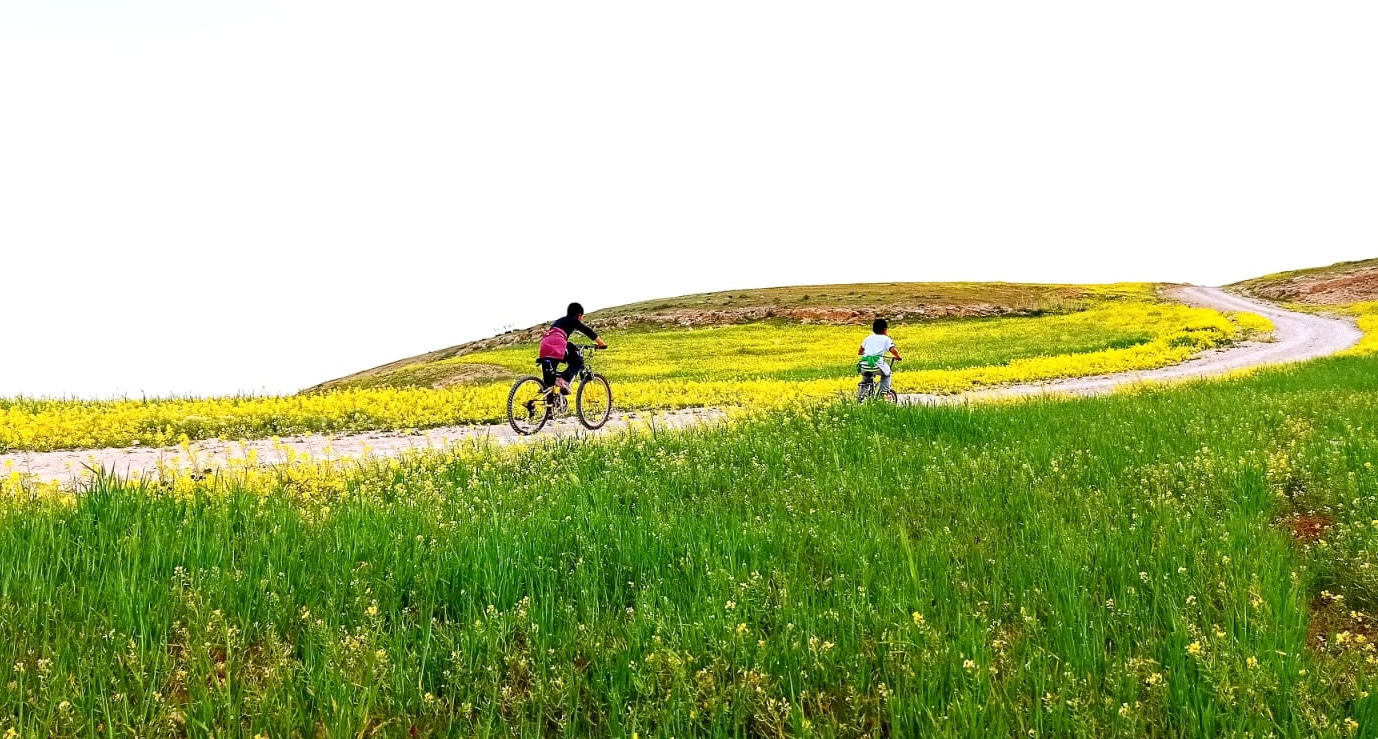
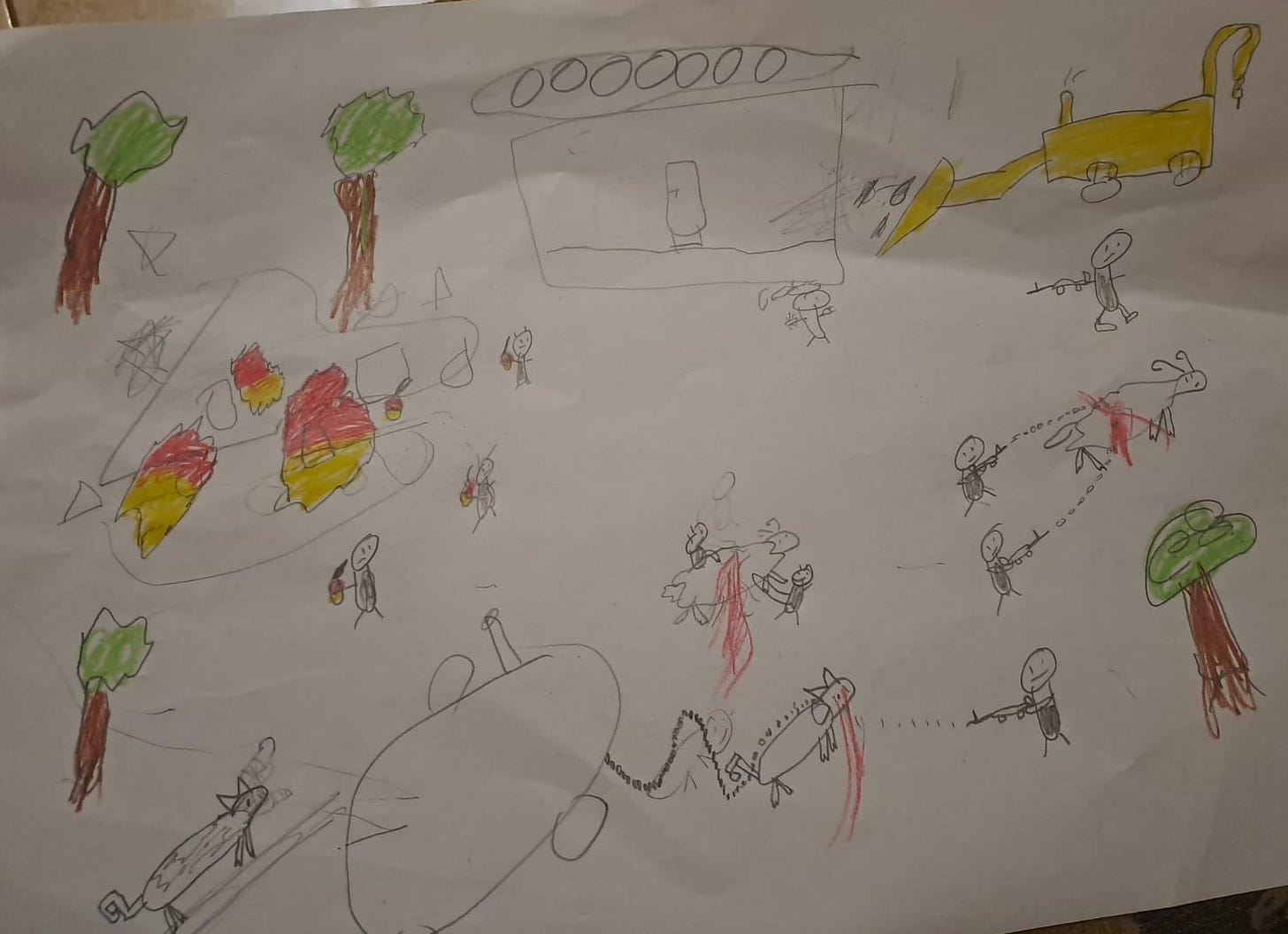
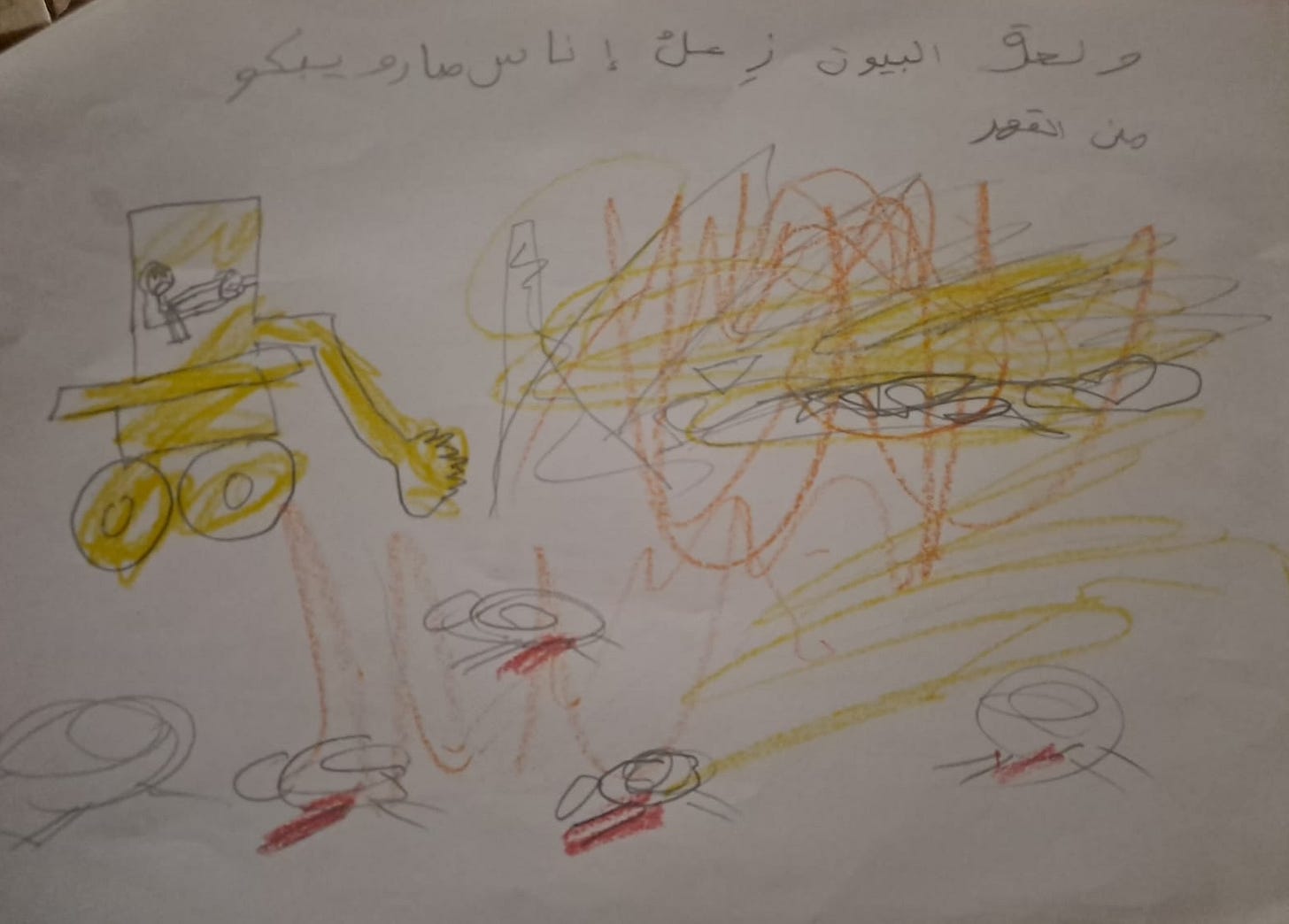
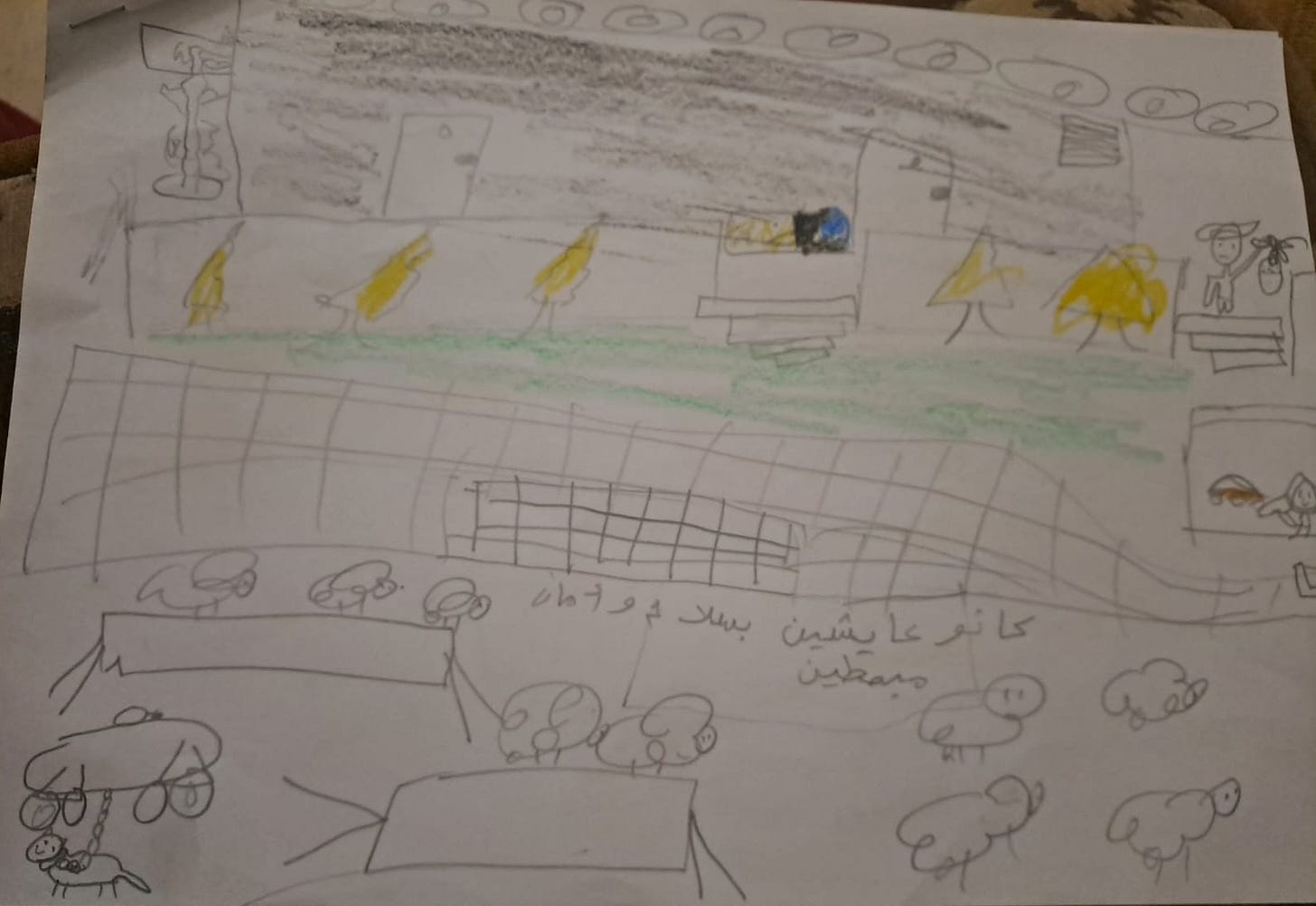
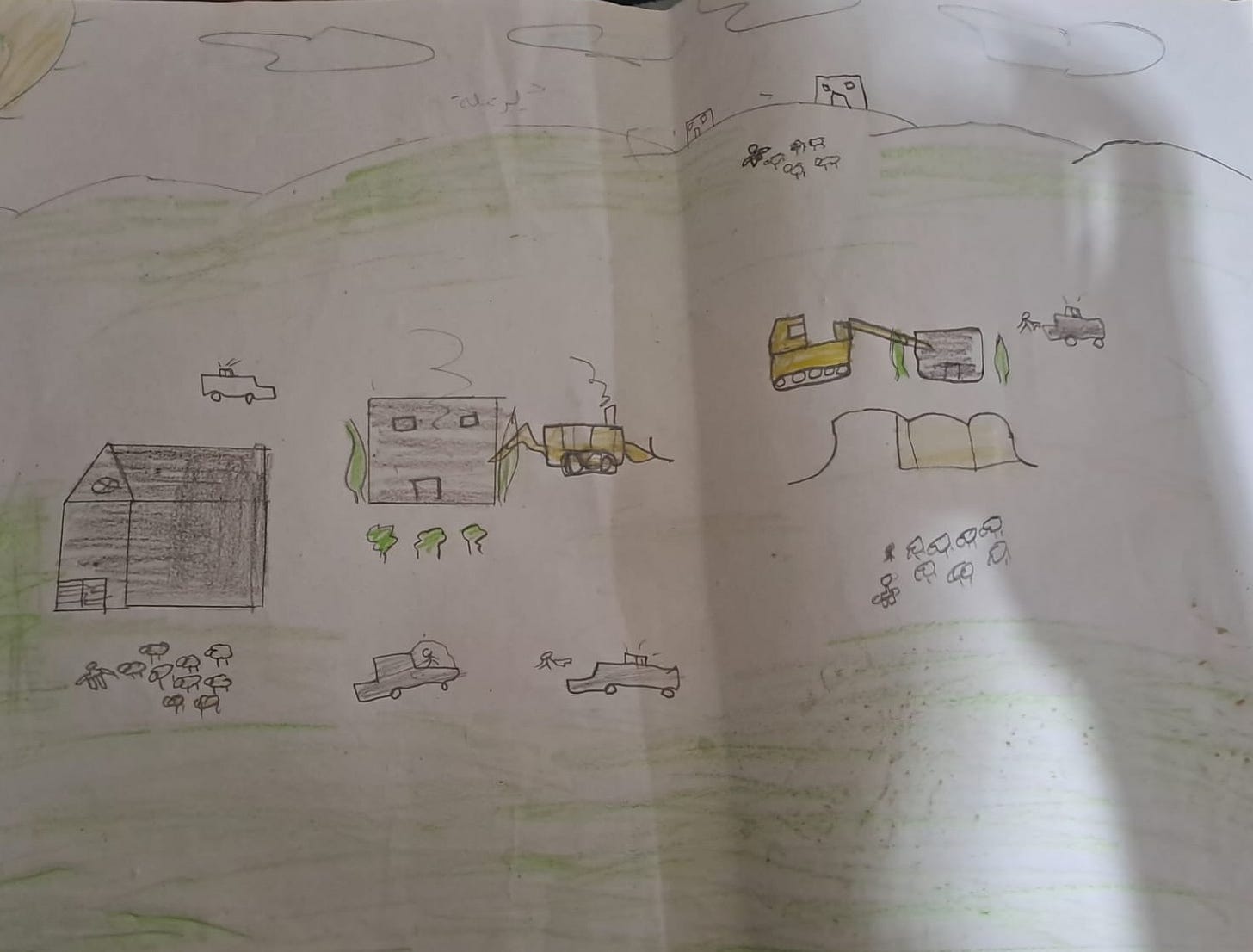
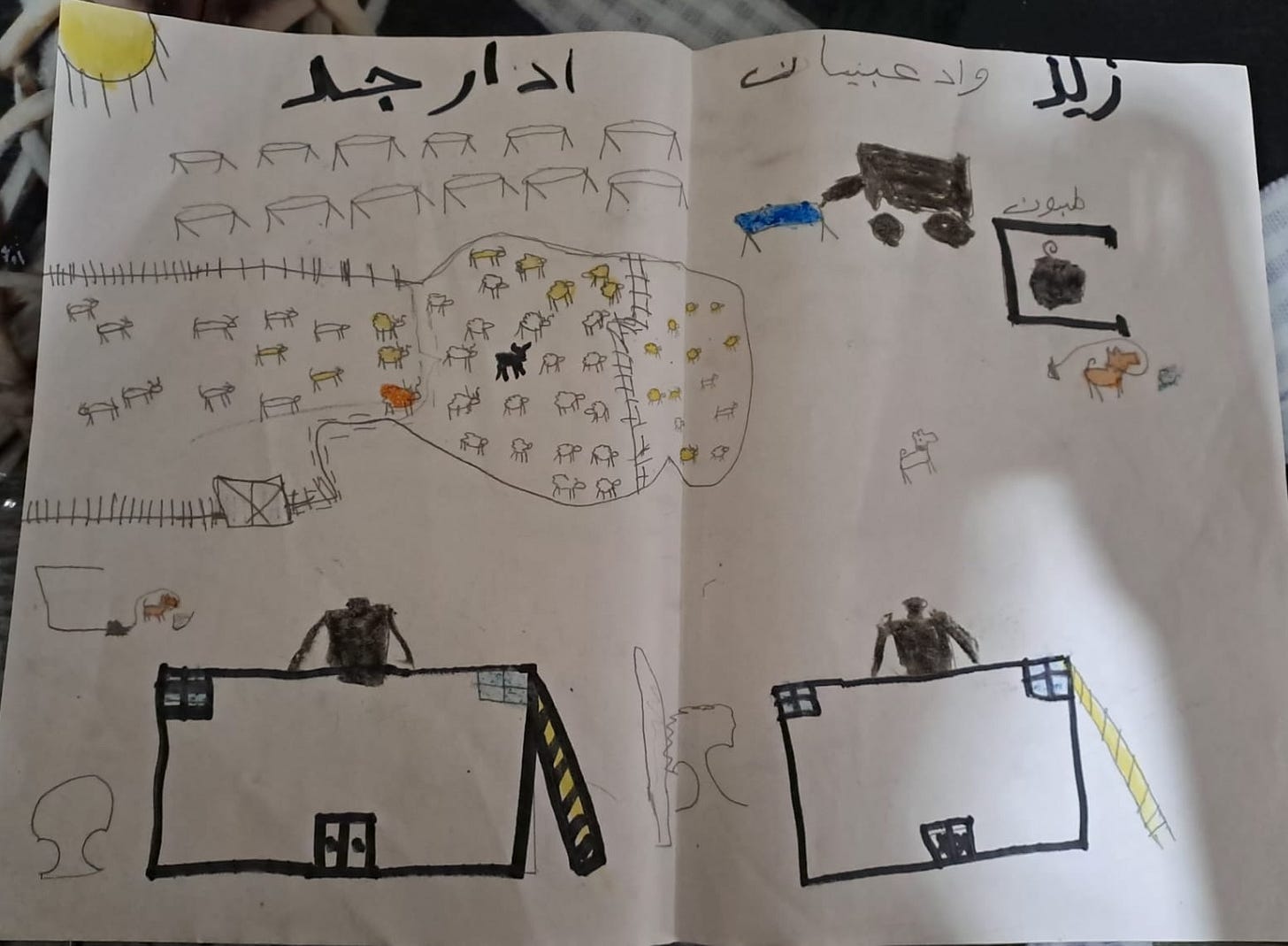
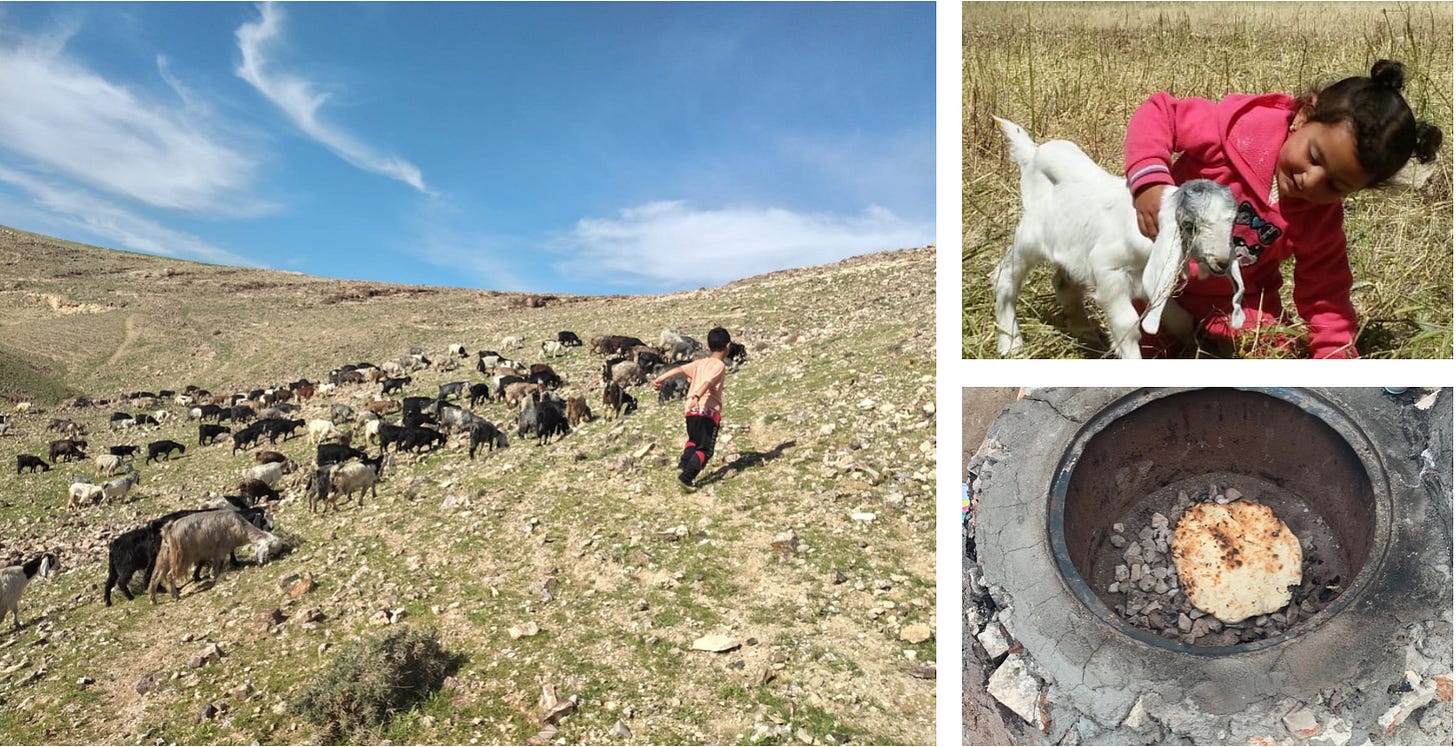
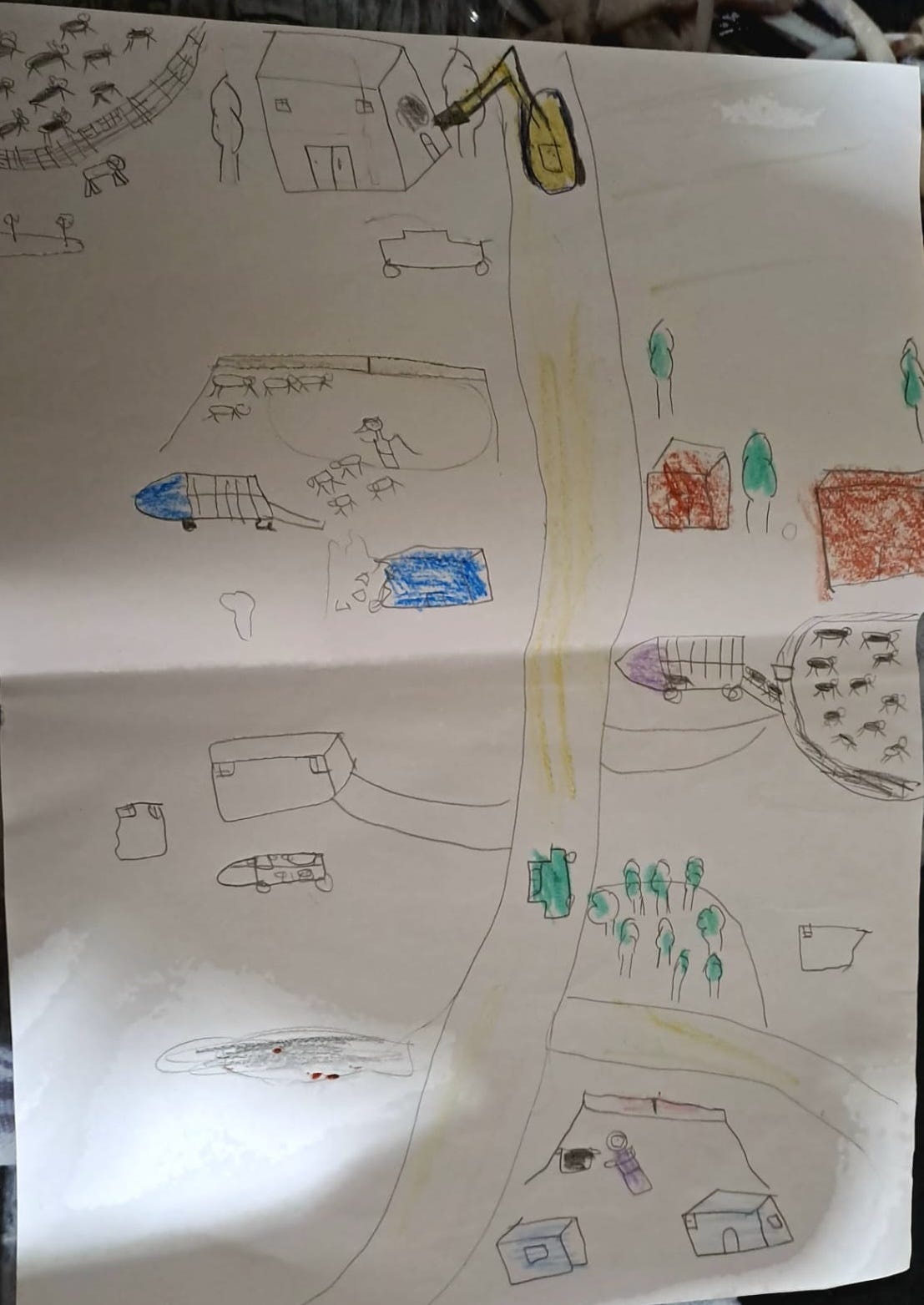
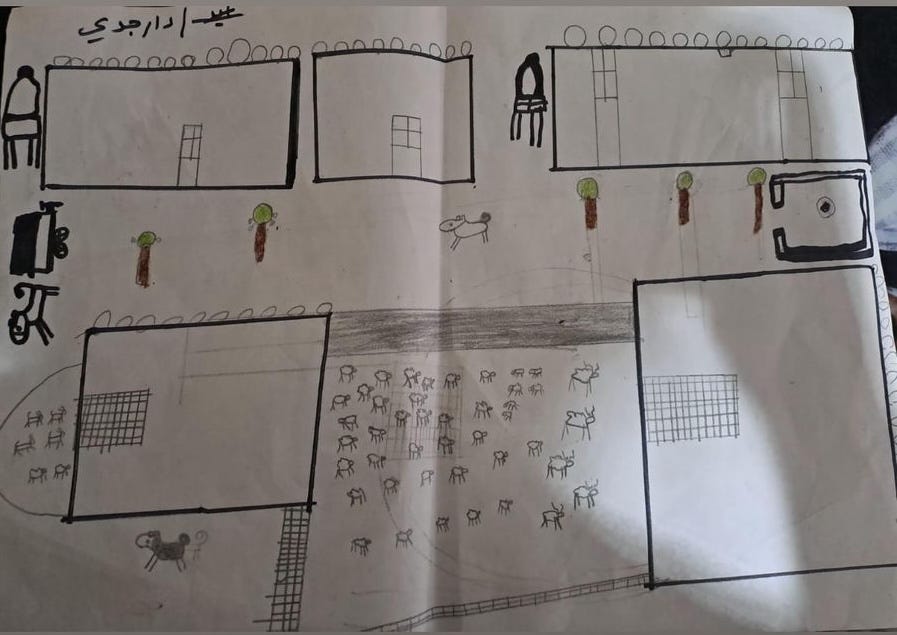

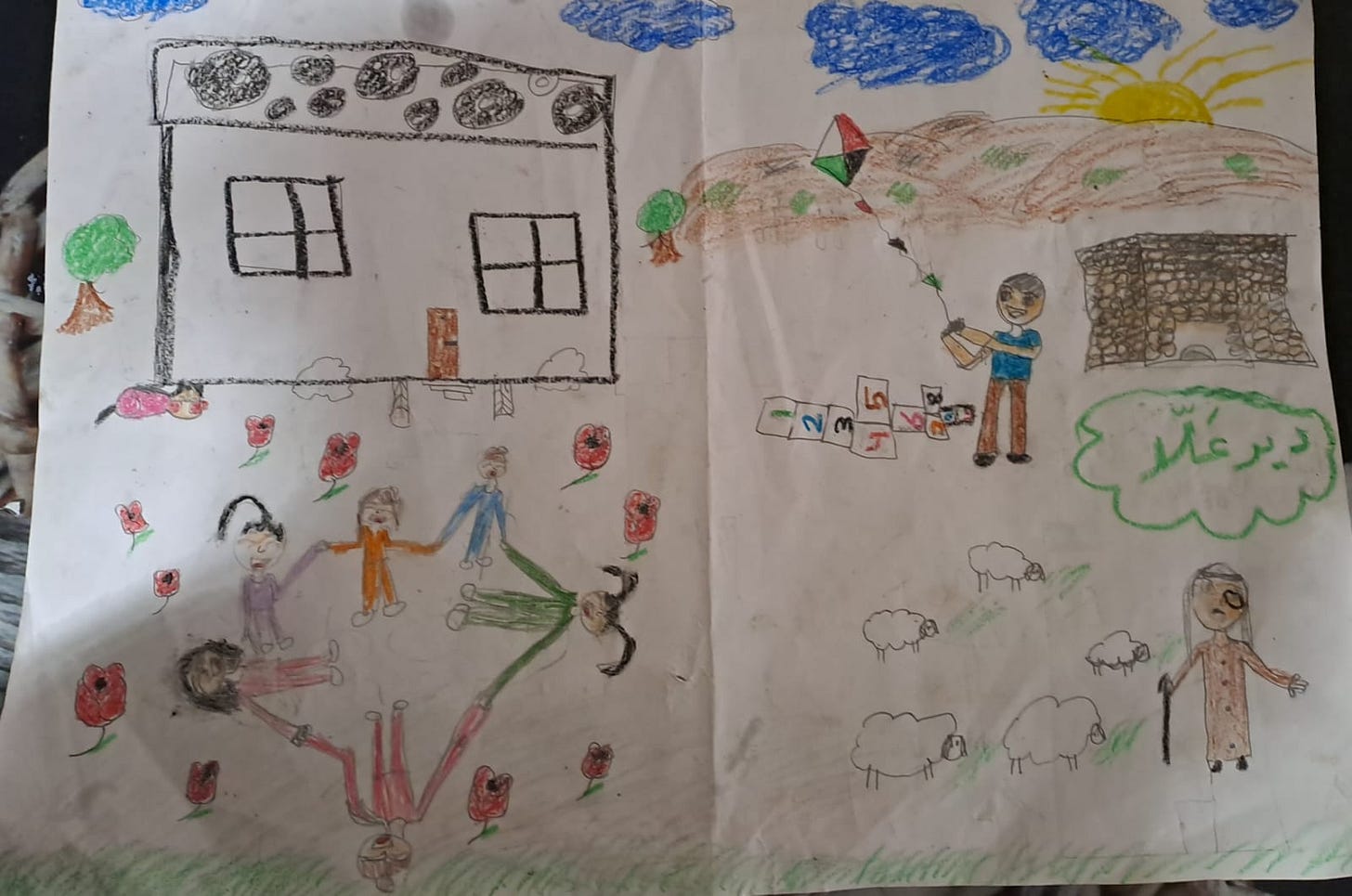
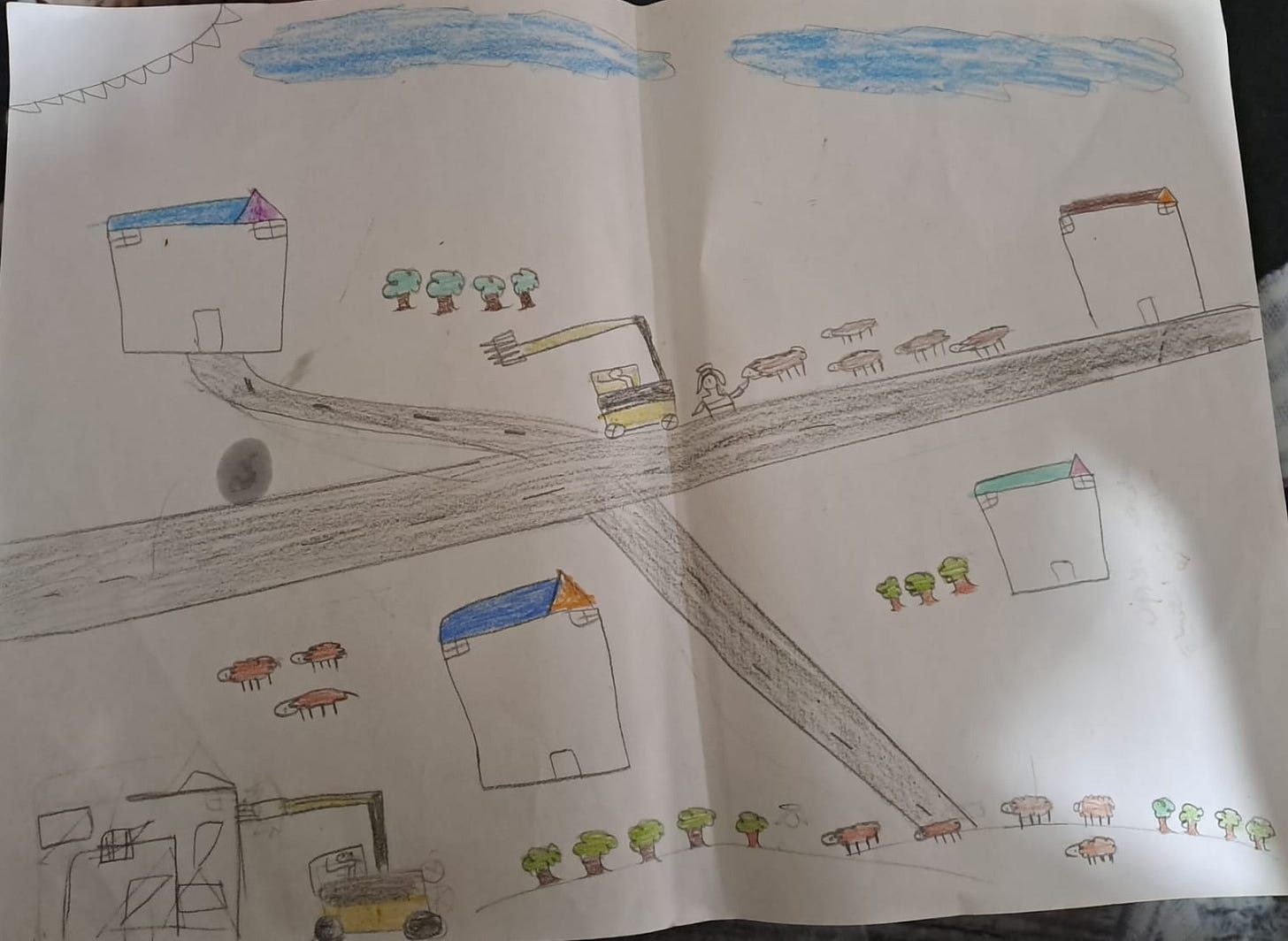
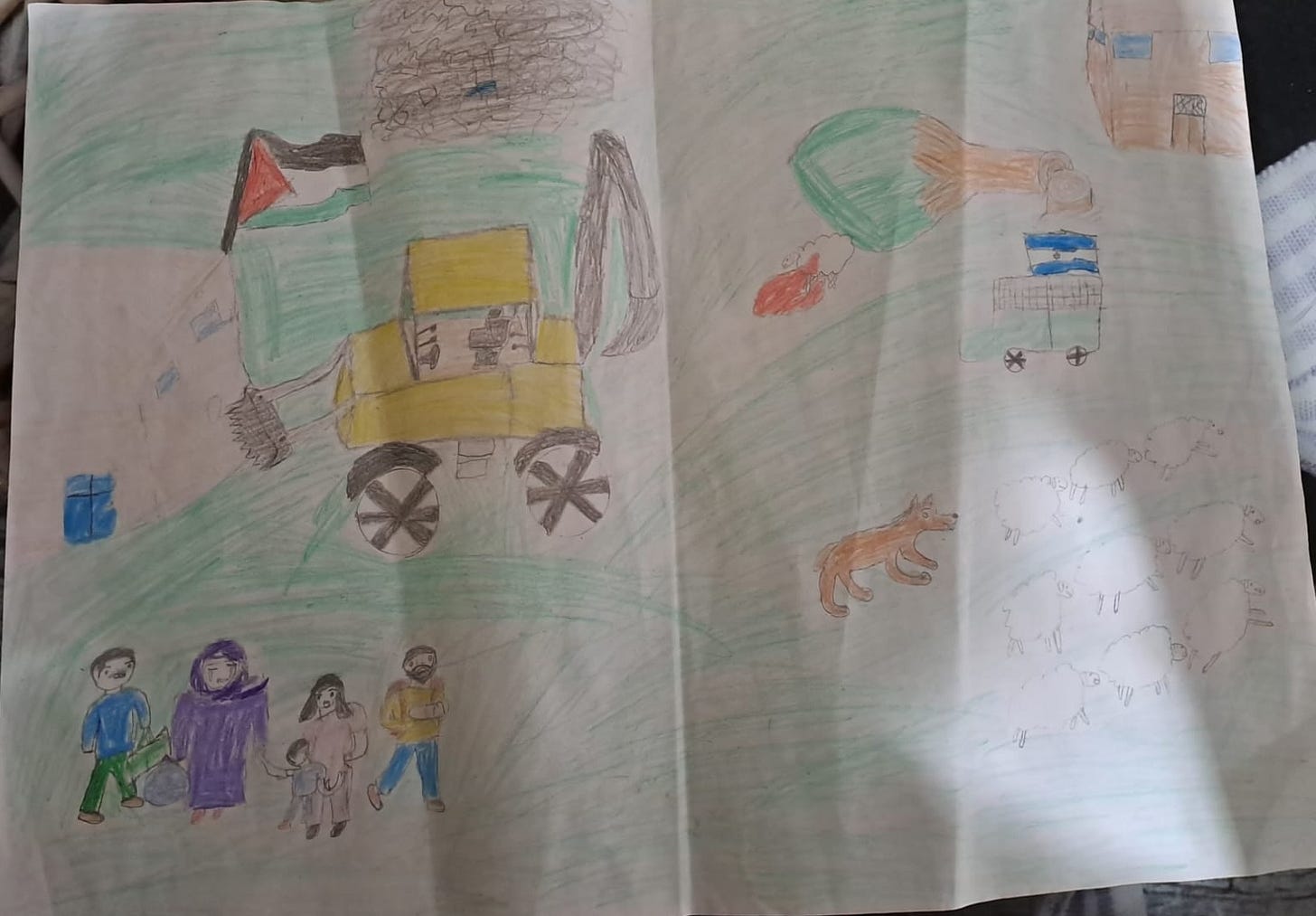
Keep telling it like it is Cara. I send love to you and my brothers and sisters in
Palestine.
Love
R.
To you, Cara - and to your friends - and to the children - this important reporting - thank-you.